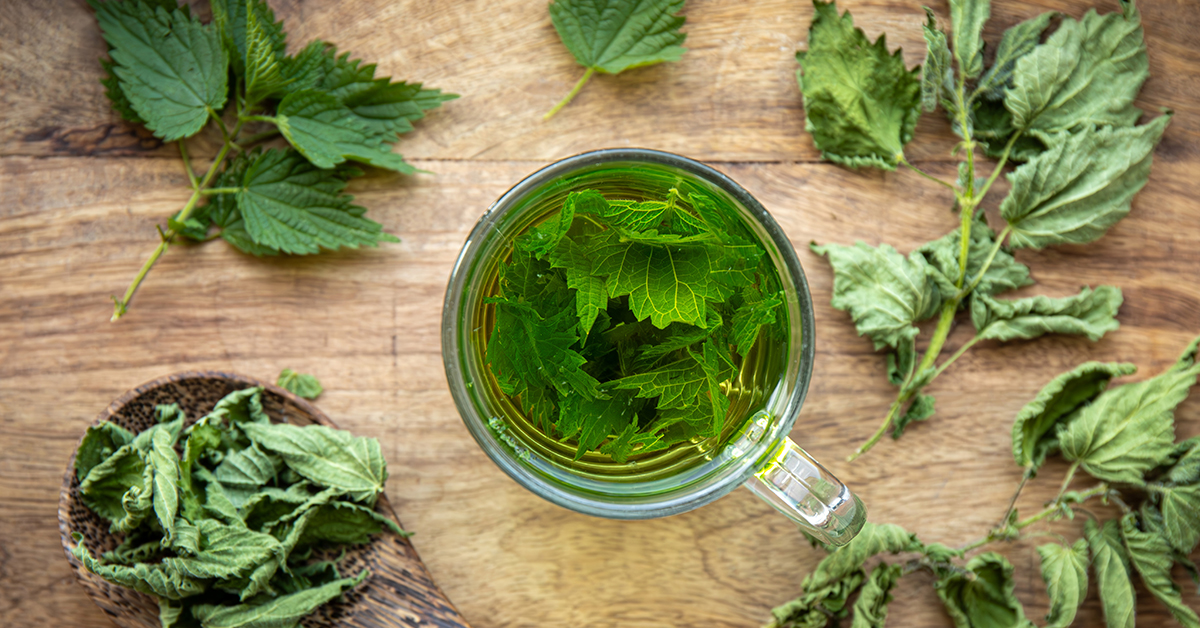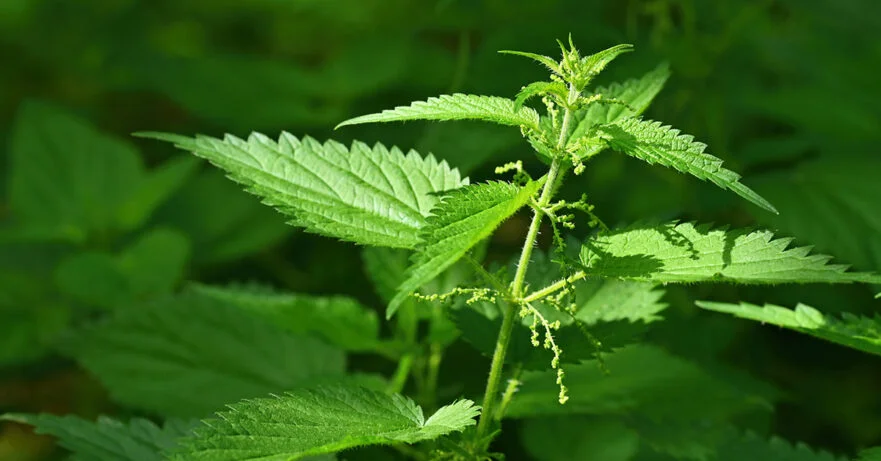In this monograph about nettle:
📖 Introduction | 🌱 Botanical Description | 📜 Traditional Uses | 🔍 Phytochemistry | ✨ Applications and Uses | 🛡️ Safety Profile
📖 Introduction
Nettle (Urtica dioica) is a perennial herb recognized for its nutritional and therapeutic properties. Known for its stinging hairs that deliver an irritating substance when touched, nettle has been used in herbal medicine for centuries. It is valued for its support in urinary health, joint pain relief, and as a nutritional supplement.
| English Name | Nettle or Stinging Nettle |
| Latin Name | Urtica dioica |
| Parts Used | Aerial parts, root |
| Traditional Uses | Skin problems, arthritis, urinary health |
| Herbal Actions | Diuretic, tonoc, hypotensive |
🌱 Botanical Description
Scientific Classification
Urtica dioica falls within the Urticaceae family.
Physical Characteristics
Nettle plants have heart-shaped, serrated leaves and tiny green or white flowers. The stems and leaves are covered with tiny stinging hairs that cause a burning sensation upon contact.
Natural Habitat and Cultivation Details
Originally native to Europe, Asia, and northern Africa, nettle is now found in temperate regions worldwide. It thrives in nitrogen-rich soil, often in disturbed areas such as farms, gardens, and roadsides.
📜 Traditional Uses
Traditionally, nettle has been utilized for its diuretic and anti-inflammatory properties. It has been employed to treat urinary tract infections, ease arthritis and joint pain, and as a spring tonic due to its rich mineral content. Nettle’s role in folklore includes uses for protection and healing.

🔍 Phytochemistry (Active Constituents)
Nettle’s broad range of health benefits is attributed to its diverse phytochemical composition, including:
- Formic acid: Found in the stinging hairs, contributes to the initial irritating effect.
- Flavonoids: Provide antioxidant and anti-inflammatory benefits, supporting overall health.
- Minerals: Nettle is rich in iron, magnesium, and silica, contributing to its nutritional value.
- Vitamins: It is particularly high in vitamins A, C, and K, which are essential for immune function and skin health.
✨ Applications and Uses
In herbal medicine, nettle is valued for:
- Urinary health: Enhancing kidney and bladder function through its diuretic properties.
- Joint pain relief: Used internally and topically for its anti-inflammatory properties to alleviate arthritis and joint discomfort.
- Nutritional supplement: Nettle leaves are consumed as a tea or green leafy vegetable, providing essential vitamins and minerals.
The application of nettle in these areas is supported by its rich content of minerals, vitamins, and bioactive compounds, which underscores its role in promoting urinary health, reducing inflammation, and providing nutritional support.
🛡️ Safety Profile
Nettle is generally considered safe for most adults when used appropriately. Contact with raw nettle leaves may cause skin irritation due to formic acid.
When consumed as a food or tea, nettle is unlikely to produce adverse effects.
However, individuals with allergies to the Urticaceae family should proceed with caution.
Pregnant and breastfeeding women should consult a healthcare provider before use due to limited research on its safety in these populations.
As with all herbs, consulting with a healthcare professional before starting any new herbal supplement is advised, especially for individuals with pre-existing conditions or those taking other medications.
📃 Related Posts
🌱 Related Herbs

